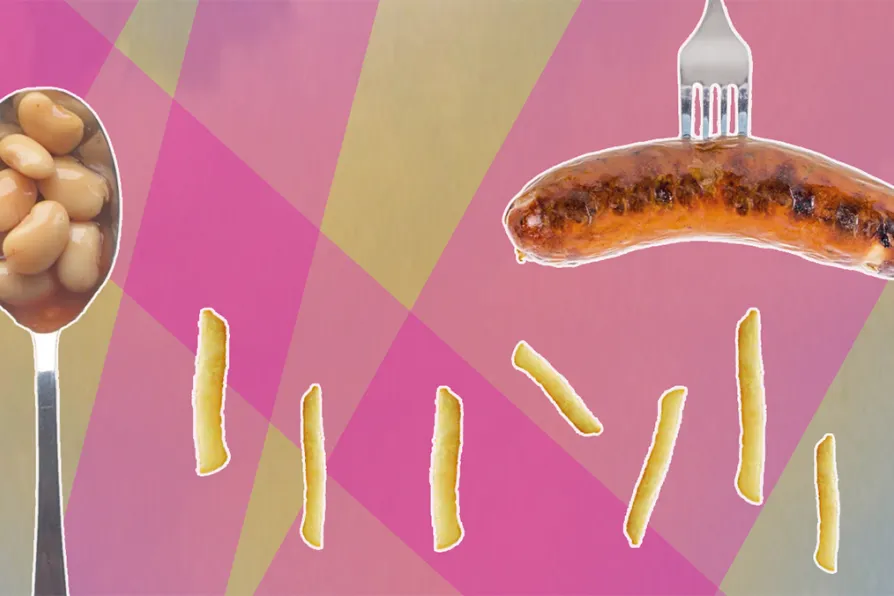The prospect of the Democratic Socialists of America member’s victory in the mayoral race has terrified billionaires and outraged the centrist liberal Establishment by showing that listening to voters about class issues works, writes ZOLTAN ZIGEDY


INSTITUTIONAL food is very telling about our society.
The opening of an article in the Guardian by Frances Crook, the outgoing chief executive of the Howard League for Penal Reform (The reform of prisons has been my life’s work, but they are still utterly broken, August 10 2021), is stark and truly heart-breaking: “Nobody really cares about prisons.”
She declares the state of our prison system as her “most bitter regret” in an article that will be an eye-opener for a lot of people.
I thank her for her courageous and brilliant account. What I would like to point out in particular is my shock and disbelief at the prisoners’ diet.
What food we give prisoners, who have no choice but to eat it, says a lot about us as a society.
Diets such as these described here imposed on others can only make divisions and inequalities deeper and more permanent.
Expenditure on prison food has been decreasing. Up until 2004 in most prisons meals were prepared by the prisoners themselves. A move to privatisation has meant that most prisons now use external services.
In 2006 cooked breakfast including porridge was dropped and replaced with the unpopular breakfast pack. According to the National Audit Office, the value of each breakfast pack is £0.27.
A paper by the HM Inspectorate of Prisons, “Life in prison: Food, 2016” describes the breakfast packs as “unappetising” and “inadequate.”
These packs sound remarkably similar to the 2021 offering that Crook describes — white bread, small portion of cereal, UHT milk.
The average daily allowance for three meals for each inmate is £1.87, though juvenile institutions receive separate, additional funding and their allowance can be as much as double.
A report from Chelmsford prison, where the film Porridge was made, quotes £1.68 per head in 2006. In some prisons this figure is £1.15 per day.
In-patient food services in hospitals by comparison have a budget of £9.88 per patient.
The fact that only white bread is offered in prison is concerning. The benefits of wholemeal bread are widely known and a recommendation for the provision of wholemeal bread in prisons can be found as early as 1878.
Though the quality of food seems to vary between prisons, the quantity is a constant complaint in prisoner reports. One inmate wrote: “Received seven chips, one sausage and a spoon of beans yesterday for my tea.”
Prisoners have reported that as a result of lack of sufficient food they were often unable to sleep because of their hunger.
Fruit is rarely present and almost always an apple. In addition, long cooking times and food standing in hot trays for up to four hours deplete ingredients of all nutrients.
By contrast, inmates in Italy are given organic fruit and vegetables for their meals as well as olive oil.
Timings are also crucial with meals often served too early in our prisons or when inmates are still in work or the gym. This results in them not being able to enjoy a hot meal that day.
Lunch can be served as early as 11am and dinner 4pm (both an hour earlier that the earliest recommended times) which means that by the evening inmates are hungry and consume their breakfast pack the night before.
Breakfast packs are delivered the previous night to release staff from that duty in the morning.
Crook points out that this means inmates start the day hungry every morning. There is a recommendation of no more than 14 hours between meals, which under these conditions is often not kept.
New prisoners, too, often find that by the time they have arrived from court there is no food for them during their first night.
I am looking at a menu from 1963 where four meals were served: breakfast, dinner, tea, supper.
Cooked breakfast was served at that time, including porridge, while for dinner (lunch) a hot meal was always preceded by bread and soup and followed by pudding and often custard.
Tea (the evening meal) included bread, tea, sweet or savoury preserves, cold meats or fried fish and sugar for the tea.
At 8pm a supper of cocoa and a snack would be served. That could be bread with a beef spread, a ham sandwich, cheese biscuits or a scone.
Then there is the issue of special diets. A catering manager in a prison would be given this daily allowance, average of £1.87, per person.
This distinction was introduced in 1996 under the name of “cash catering.”
So for inmates with religious or special dietary requirements, whose food could be more expensive to produce, this could mean even smaller portions.
The rarity of red meat in the prison kitchens means that Muslim and Jewish inmates would have fewer opportunities to access meat at all, sometimes only once per fortnight when chicken would be available. Issues of cross-contamination limit this access further.
An inmate writing for Inside Time, the national newspaper for prisoners, points out that the preferences indicated on the pre-selection menu hardly ever arrive.
Opportunities for communal meals are limited due to space and logistics; inmates in many cases are forced to eat in their cells and not always in optimum conditions.
The diet imposed on prisoners has a profound impact on them not only physically but also psychologically, as food choices affect their self-esteem and identity.
Improving this aspect of their experience would give them and their families reasons for hope.
















